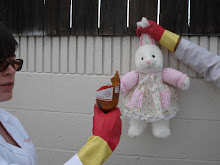The thing about rocks is that there is a lot of nomenclature, lots of vocabulary to learn. Rocks "are aggregates of minerals" as the official definition goes. There are three categories for rocks: Igneous, Sedimentary, and Metamorphic.
Igneous: These rocks are the freshest of the bunch. They’re either made volcanically at the surface (EXTRUSIVE) or by the cooling of magma beneath the earths surface (INTRUSIVE). Rocks look A LOT different if they cool at the surface or cool inside the earth. Cooling inside the earth gives the rock time to develop big, purdy crystals. If you’re an igneous rock being fired out of a volcano, you don’t have much time to cool off before solidifying so your crystals are going to be itty-bitty.
Within the realm of igneous rocks, we’ve got the stuff that makes up our continental crust and the stuff that makes up our oceanic crust. The two look very very different. Oceanic crust is MAFIC which means it’s really rich in iron and so it’s black. Our favorite mafic rocks are Basalt and Gabbro. Continental crust is FELSIC and made up of lighter stuff like potassium, sodium, and silicon. Rocks with potassium are very cute and pink, so you’ll get a lot of white and pink in rocks like Granite and Rhyolite.

Metamorphic: These rocks were igneous or sedimentary rocks at one time, but have been mooshed or buried long enough to metamorphose into a new kind of rock. We’ve got stuff like Gneiss, with it’s nice layering (that’s a geology joke for those who didn’t get it [fucking kill me now]). Gneiss can begin its life as Granite or a layered sedimentary rock. We’ve also got Slate, the stuff that chalkboards were once made out of. Slate is very black and very well layered. You squeeze the shit out of Slate and you’ll eventually get Schist – the rock responsible for the destruction of the St. Francis Dam (see “Damn Dam”). Let’s see, what else. Marble is a metamorphic rock, so that’s nice. No not Gneiss, nice.
 Awww, Gawd. I’m boring myself so I must be boring you. But now you know about rocks so, I guess that’s good?
Awww, Gawd. I’m boring myself so I must be boring you. But now you know about rocks so, I guess that’s good?

No comments:
Post a Comment